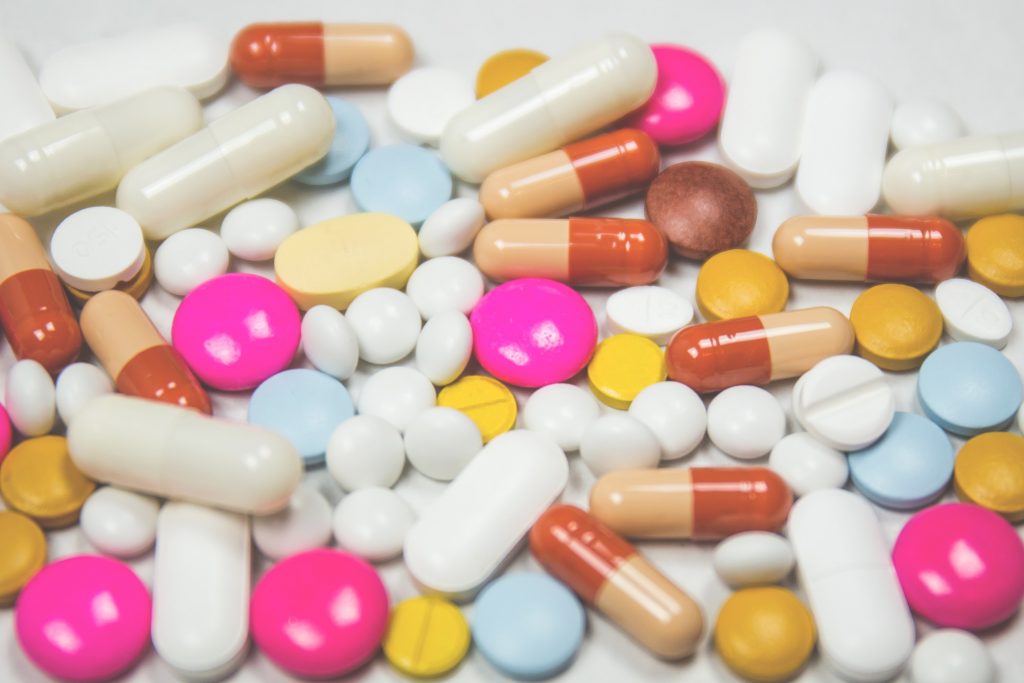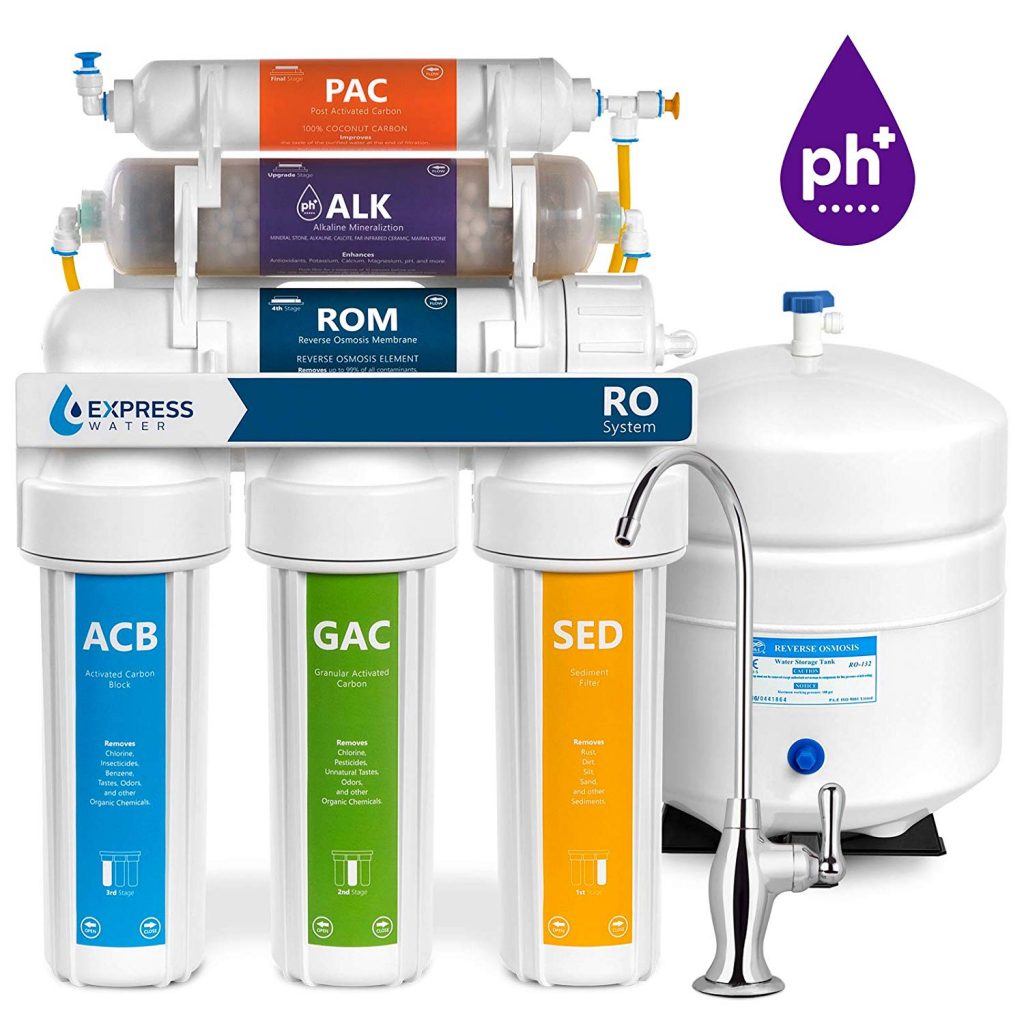Just about everyone has a Brita filter these days or something similar, but you may need a reverse osmosis water filter instead.
Maybe you have a water filter because it makes your water taste better or because you know that your city adds chlorine and you can’t stand the taste. However, these simple filters may only do just that. The chart below indicates that Brita filters only remove the taste and odor of chlorine, not chlorine itself. So you are still drinking pool water, essentially.

Common toxins that regular water filters don’t remove:
1. Chlorine
Toxins such as chlorine are very important when it comes to cleaning water before it can come out of your tap. However, not removing it comes with a health risk.
According to a study by the Medical College of Wisconsin, drinking chlorinated water is associated with an approximate 93% higher risk of developing cancer. In many drinking water reports, the “Toxins” category lists chlorine and a few other common city water components.. Cities also report trihalomethanes.
Since a regular water filter cannot remove chlorine completely (although you can boil it), you will need a reverse osmosis water filter.
2. Trihalomethanes
Trihalomethanes are “a group of four chemicals—chloroform, bromodichloromethane, dibromochloromethane, and bromoform—formed, along with other disinfection by-products, when chlorine or other disinfectants used to control microbial contaminants in drinking water react with naturally occurring organic and inorganic matter in water” according to The Groundwater Association (NGWA).
Risk Factors:
Trihalomethanes are also associated with a higher risk of cancer and even miscarriage among pregnant women.
Regular water filter charts don’t even list trihalomethanes and one of them is chloroform. You may have seen chloroform used as a way to make someone unconscious in classic action movies. That’s in your water, too.
Only reverse osmosis water filters can remove trihalomethanes.
3. Antibiotics

Antibiotic resistance by superbugs is one of the greatest global health risks today. In a recent study posted by The Guardian, “35% of rivers in Africa exceeded safe limits for concentrations of antibiotics.”
The largest global study on antibiotics in the water concluded that all of the major rivers in the world contain dangerously high levels of antibiotics including some of the more dangerous ones like fluoroquinolone antibiotics.
Only reverse osmosis water filters can remove antibiotics from your water.
4. Microplastics
According to a podcast by Scientific American, we consume between 74,000 and 121,000 microscopic pieces of plastic each year and about 60% of the micro plastics in drinking water comes from laundry lint, aka the plastics in your clothing.
Although you can try to filter out the lint in your own washing machine or go for all organic, non-plastic clothing materials, you will still find microplastics in your water from your neighbor’s washing machine. Only reverse osmosis water filters can remove microplastics.
5. Fluoride
Although people give backlash all the time about fluoride in the water sources, 100% of studies verify it as a neurotoxin when taking a certain amount. Fluoride can pass the blood-brain barrier and mess with GABA receptors, which regulate emotional control, and when added to water, it is in everything, since farmers use water to grow produce, we drink it, brush our teeth with it, shower in it, cook with it, etc, and fluoride, like heavy metals, is known to build up in the body rather than flush out like some other toxins.
So, regardless of how you feel about fluoride, all science agrees that large amounts are bad for us and it shouldn’t be added to drinking water. Only reverse osmosis water filters can remove fluoride.
In addition, if you have ever taken a fluoroquinolone antibiotic (Cipro, Avelox, Floxin, Levaquin), you are at a higher risk of neurotoxicity or “refloxing” if you drink fluoridated water. Since I, personally, am a floxie, I need to avoid fluoride at all costs which is why it’s on this list.
What are the best reverse osmosis water filters?
1. APEC Top Tier 5-Stage Reverse Osmosis Drinking Water Filter System

I have this reverse osmosis water filter. I’ve had it for almost a year and I really love it, so that’s why I’ve placed this one first even though there may be better options.
Pros:
- Removes just about everything
- Fits under the counter
- Easy to install
- Amazing customer service
- One of the cheapest options
Cons:
- Does not add electrolytes to the water
- Difficult to install if you aren’t handy
- Difficult to know which filters to replace and when
Price:
2. APEC Top Tier Supreme Certified Alkaline Mineral pH+ 6-Stage Reverse Osmosis Drinking Water Filter System

Pros:
- 6 filters really remove everything.
- Adds calcium carbonate for alkaline water
- longer lasting filters
- WQA certified
- Nicer faucet
Cons:
- Difficult to install if you’re not handy
- Difficult to know which filters to replace and when
- Expensive
Price:
3. Express Water Alkaline Reverse Osmosis Water Filtration System – 10 Stage RO Mineralizing Purifier – 50 GDP

Pros:
- 10 filters!
- Adds electrolytes: calcium, magnesium, potassium
- Removes 99.99% of contaminants
- WQA certified
- Nicer faucet
- More features for a cheaper price
Cons:
- Unsure of quality
- Difficult to know which filters to replace and when
- Larger than other filters
Price:
4. GREATWELL 400 GPD Tankless Reverse Osmosis (RO) Water Filtration System

Pros:
- Innovative, minimalist design
- No extra tank or bulky mess
- Small, fits into tighter spaces
- Larger, 3-in-1 filters that last longer
- Straight to faucet
Cons:
- Expensive
Price:
How can I tell if my water filter is working?
If your water tastes funky or you’re not sure the filter is working, you should invest in a TDS meter. I have the HM Digital TDS-EZ Water Quality TDS Tester, which only has 3% readout accuracy and doesn’t give you a list of the minerals or contaminants found.
However, you can find others that have better features. They’re also portable, so you can check your office water and other water quality as you travel.
Related post: How to Remove Chlorine from Water | Sensible Digs

